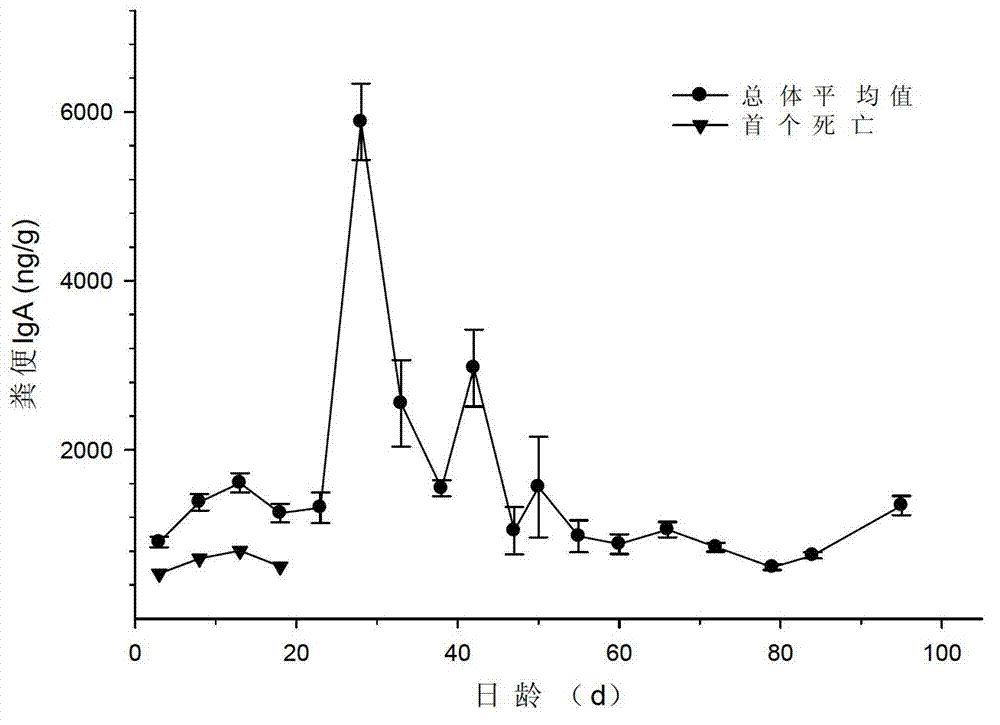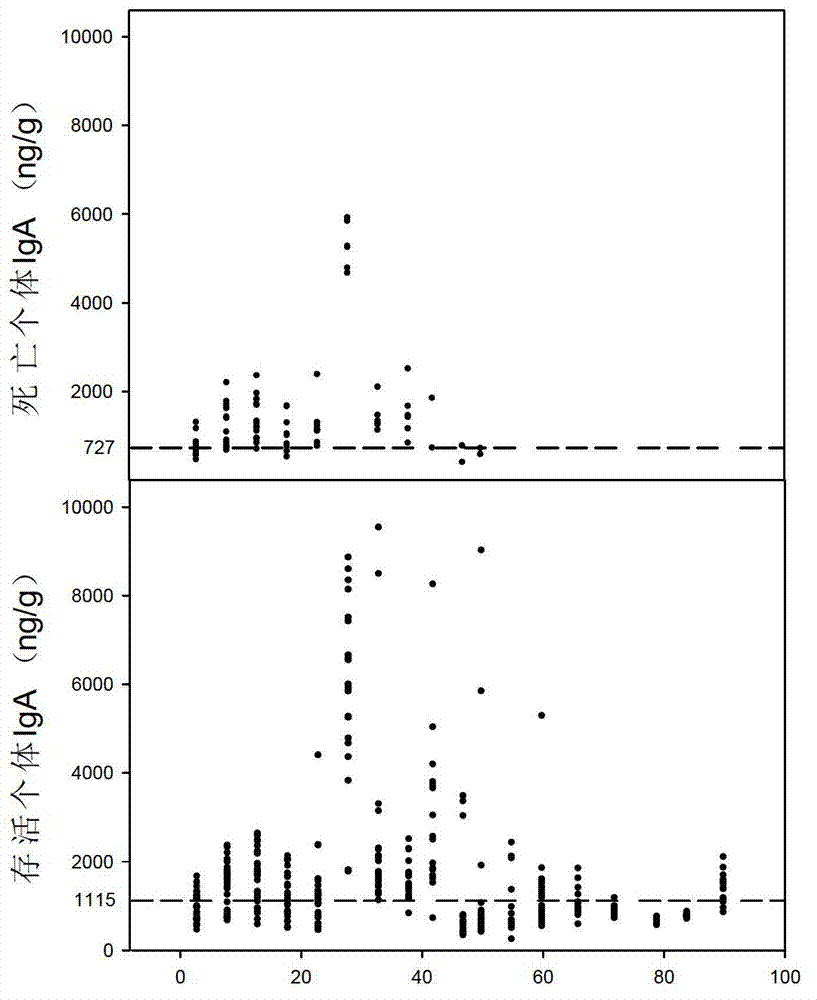Method for judging physical conditions of brown-eared pheasant chickens through non-invasive sampling method and for grouping feeding
A technology for brown eared pheasants and chicks, which is applied to the field of judging the physical condition of brown eared pheasants and brooding in breeding, can solve problems such as inapplicability, and achieve the effect of reducing mortality
- Summary
- Abstract
- Description
- Claims
- Application Information
AI Technical Summary
Problems solved by technology
Method used
Image
Examples
Embodiment 1
[0049] Example 1. Determination of critical IgA content in the health status of brown horse chicken chicks using feces as the sample to be tested
[0050] 1. Grouping and breeding of brown horse chicken chicks to be tested
[0051] The brown horse chicken chicks artificially hatched in Pangquangou Nature Reserve from May to September 2011 were taken as the research object. From May 24 to June 12, 103 eggs from 9 litters in the wild hatched 93 chicks, with a hatching rate of 90%. For the determination of IgA content, 30 chicks hatched on May 29, from 3 litters, were divided into group A (14), group B (7), and group C (9). When the chicks are 2 days old, they are marked with a colored steel ring. The steel ring weighs 0.8g and is replaced every 30 days thereafter.
[0052] The chicks are 1 to 35 days old. The hens raised in the reserve will bring their chicks, and they will be reared in the chicks rearing room on a litter basis, providing sufficient chick feed and the same room tempe...
Embodiment 2
[0086] Example 2. Breeding and brooding test of brown horse chicken
[0087] Two-year brown horse chicken breeding brood grouping trial in 2011 and 2012
[0088] 1. Raising of 2~4 day old chicks
[0089] Experimental animals and groupings: 60 2- to 4-day-old brown horse chicken chicks artificially hatched from Pangquangou Nature Reserve were randomly divided into two groups, 45 in the experimental group and 15 in the control group.
[0090] Experimental group: According to the method described in Example 1, the content of IgA in the feces of brown horse chicken chickens in the experimental group was determined. According to the content determination results, referring to the results of the Euclidean distance systematic clustering analysis of the IgA content in the feces of the 3-day-old brown horse chicken chicks in step 6-3 of Example 1, the 60 2--4 day-old brown horse chicken chicks were divided into the following three groups , Isolate breeding between groups:
[0091] Group A: 20 ...
PUM
| Property | Measurement | Unit |
|---|---|---|
| Sensitivity | aaaaa | aaaaa |
Abstract
Description
Claims
Application Information
 Login to View More
Login to View More - R&D
- Intellectual Property
- Life Sciences
- Materials
- Tech Scout
- Unparalleled Data Quality
- Higher Quality Content
- 60% Fewer Hallucinations
Browse by: Latest US Patents, China's latest patents, Technical Efficacy Thesaurus, Application Domain, Technology Topic, Popular Technical Reports.
© 2025 PatSnap. All rights reserved.Legal|Privacy policy|Modern Slavery Act Transparency Statement|Sitemap|About US| Contact US: help@patsnap.com



